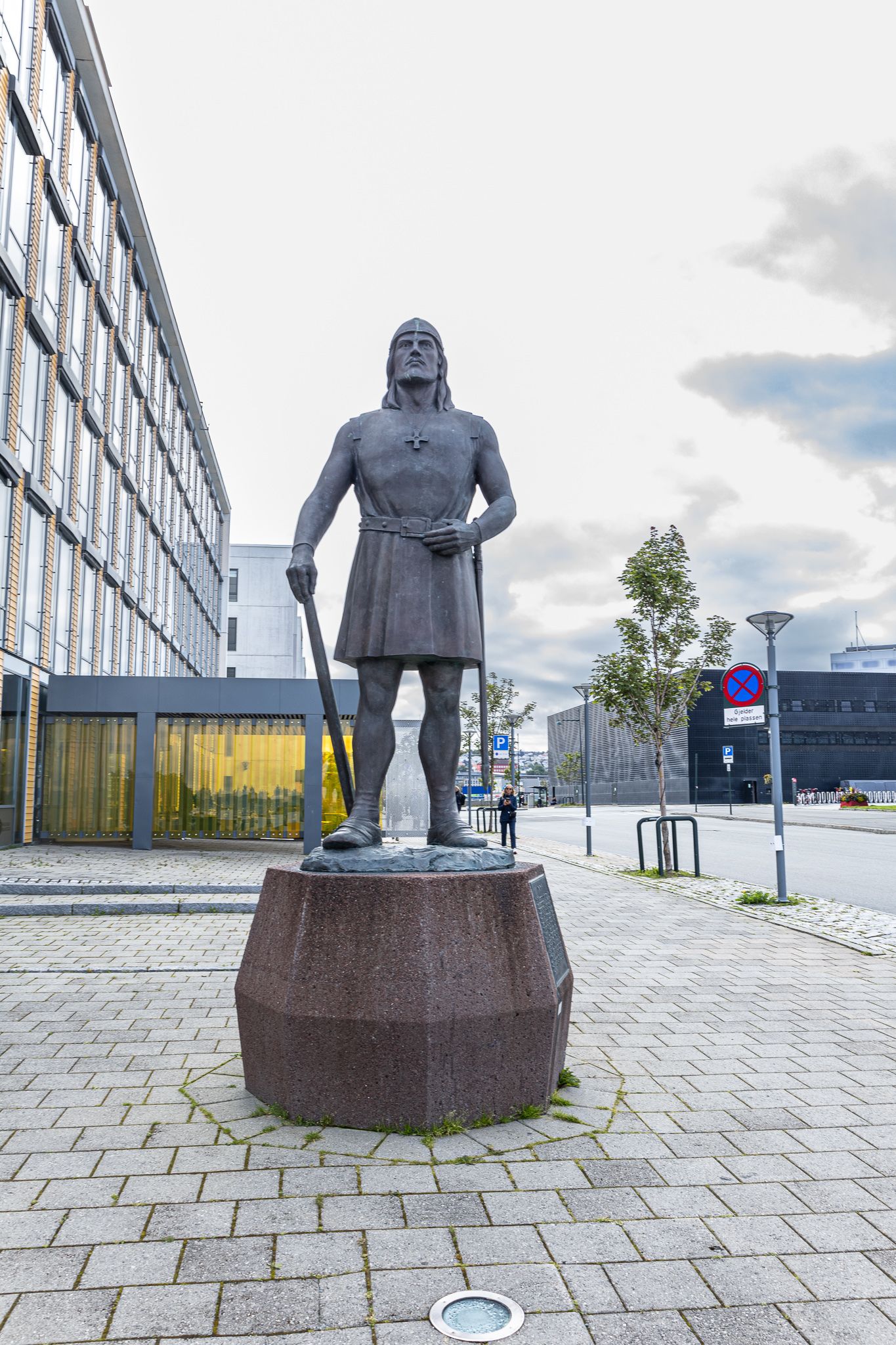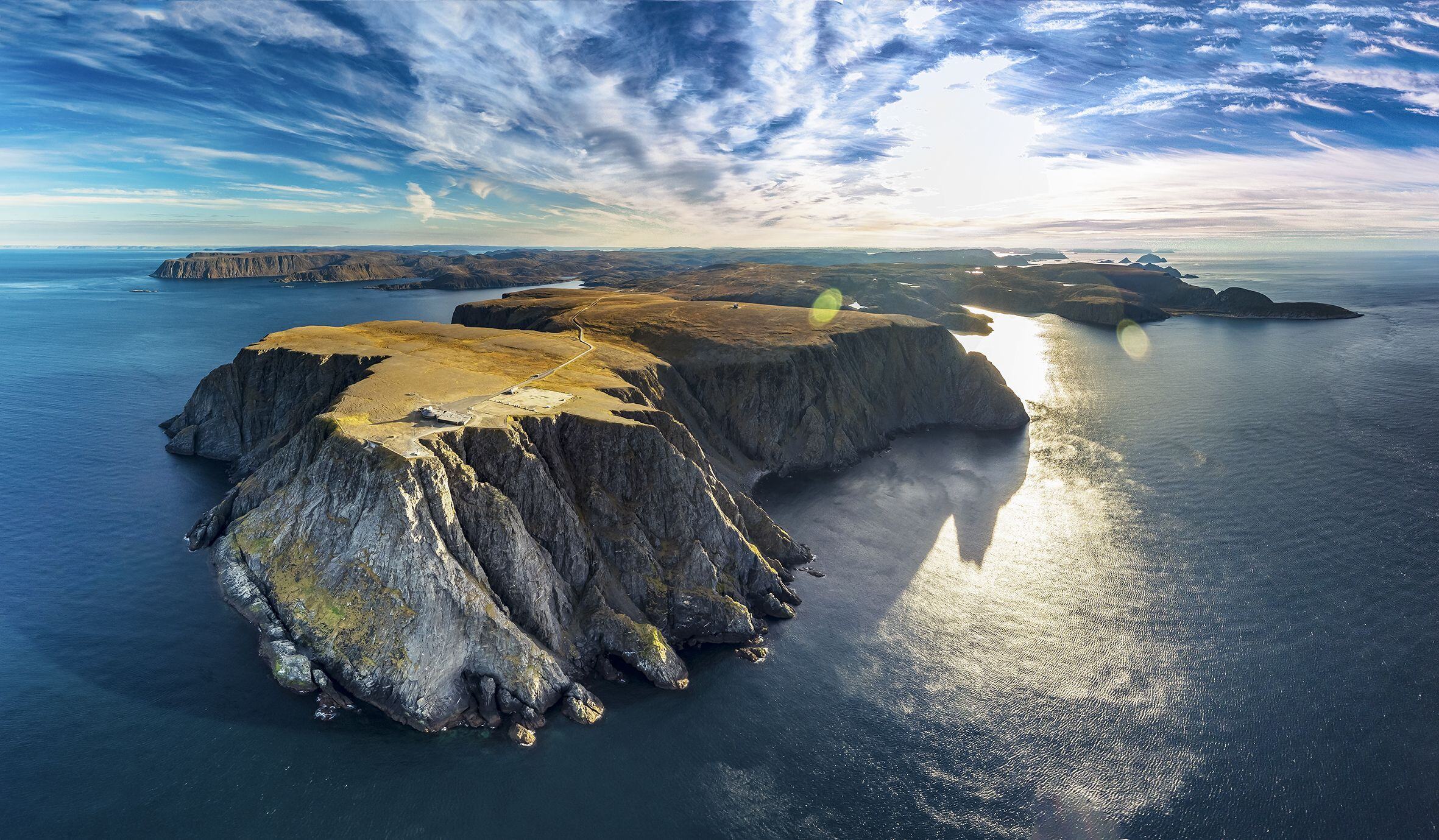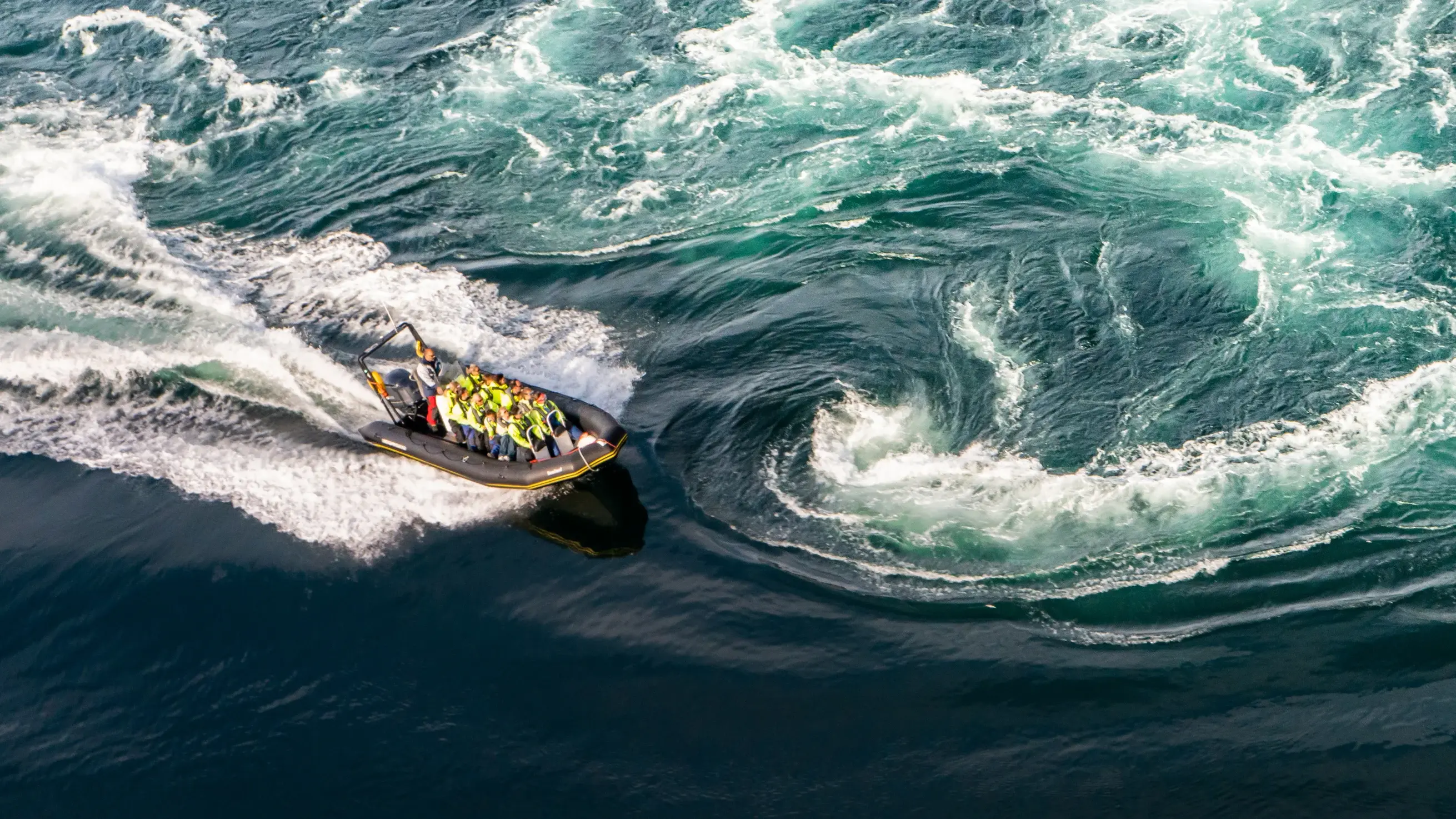Exploring Trondheim by Wooden Boat
Cruising down the Nidelva River in a traditional clinker-built wooden boat provided a unique perspective on Trondheim's rich culture and history. Each landmark we passed, from the majestic Nidaros Cathedral to the quaint Old Town Bridge, offered a glimpse into the city's storied past.
Setting Sail on "Frøya"
It was early morning when we stepped off the gangway from Havila Pollux to the Trondheim Coastal Terminal, where our guide, Millan Skjærbusdal, was waiting for us. Millan, the manager of "Trondheim by Boat" and skipper of the traditional clinker-built ridge fjord boat "Frøya," greeted us warmly. Despite the clear skies and bright sunshine, the air was freezing. Thankfully, the Havila Voyages expedition team had thoughtfully warned us to bundle up before we left the ship.
On our way to the wooden boat, we stopped at a statue honoring Leiv Erikson, the Norse explorer credited with discovering America nearly a millennium ago. The statue, a gift from the Leif Erikson Society in Seattle to the city of Trondheim in 1997, commemorated both the thousandth anniversary of Trondheim and Leiv Erikson's historic voyage to America.

Statue of the Norse explorer, Leiv Eriksson.
Aboard "Frøya"
Five minutes later, we reached the small dock where "Frøya" was moored. Named after the Norse goddess of love, this vessel was a true embodiment of the clinker style, built using traditional techniques passed down through generations in the Trondheim region for centuries. The design paid homage to the Norwegian Viking ships that once sailed the seas more than a thousand years ago. We found warm blankets on board, ready to cocoon us as we began our journey down the Nidelva River through the historic heart of Trondheim.
A Floating Cultural Monument
Fortunately, we didn't have to use the oars; the boat was equipped with a 20-horsepower outboard motor (soon to be electrified), which ensured a leisurely pace as we navigated through the charming city. Periodically, Millan would turn off the engine so we could hear her talk and take in our surroundings.
Historic Sights and Stories
One of the first sights we encountered was the 1866 steamship SDS Hansteen, one of Norway's oldest surviving iron ships, and the only steamship anchored at this Trondheim quay. Today, the SDS Hansteen is a protected ship operated by the Trondheim Maritime Museum. In addition to being used for tourism, the ship is also used to teach old seafaring techniques, underscoring the city's commitment to preserving its maritime heritage.
As we continued our journey, we soon reached what was arguably the highlight of our river sightseeing adventure: the passage between rows of vibrant wooden houses that took us directly under the Old Town Bridge, a structure that dates back to 1685. This bridge, adorned with intricate red portals known as the "Portal of Happiness," is one of the most photographed places in Norway.
The Architecture Saved the District
The settlement along the eastern bank of the Nidelva River is known as Bakklandet. For much of Trondheim's history, this area served as a suburb and industrial center, bustling with merchants known for their quality goods. On the day of our excursion, the receding spring tides allowed us to see the stilts on which the buildings stood, a distinctive architectural feature found in about a third of the buildings in Bakklandet. Millan explained the reason for this peculiarity: "The houses were built 'into the river' to prevent boats from running aground when delivering supplies to the merchants. The goods were hoisted onto the waterfront pier and sold on the street side," she said.
She then delved into the city's turbulent history, recounting devastating fires that nearly wiped out the downtown area. After the most catastrophic fire in 1681, the King of Denmark sent engineer Johan Caspar de Cicignon to Trondheim to oversee the rebuilding of the city and to minimize the potential damage in the event of future fires - which, unfortunately, did occur. "The oldest pier on Bakklandet dates from around 1730. It was spared because Cicignon designed Trondheim's streets so that if a fire broke out, it couldn't jump to the other side of the street. His strategy worked and ensured that the row of buildings along the river remained intact," said Millan.
Belated protection for Bakklandet
Another interesting aspect of Trondheim's history centered around the disastrous plan proposed by the Trondheim municipality in 1970, which nearly led to the demolition of the structures in Bakklandet to make way for a highway. "I usually joke that the idea was probably conceived during a late-night party, and that was that," Millan said humorously. "Fortunately, there was a non-profit organization in Bakklandet that put a stop to it. The rules were changed. Still, many years would pass before the Directorate for Cultural Heritage intervened to protect the facades along the pier. However, preserving the interiors of the buildings proved impossible, as they had long since been converted into apartments.
Greeting the skipper of another clinker-built boat at 'Trondheim by Boat'.
Havila Voyages Docks at an Artificial Island
Millan grew up in Trøndelag, and her deep connection to the region was evident in her extensive knowledge and unwavering dedication to her hometown. While she pointed out the well-known landmarks, such as Nidaros Cathedral, she also revealed lesser-known facts. For instance, she mentioned that Trondheim's train station was built on an artificial island, as was the land beneath Trondheim's coastal terminal, where Havila Voyages ships dock. "It was built during the Second World War, and was originally intended as a dock for warships," she explained.
Continuing Our Coastal Adventure
Two and a half hours after Millan met us at the "warship quay" in Trondheim, we returned to the Havila Pollux and continued our adventure along the Norwegian coast. In the "souvenir bag" we carried a freshly acquired assortment of stories and memories of Trondheim that provided a unique insight into the city. We looked forward to sharing our experiences with some of our shipmates, knowing that they too would have plenty of stories to tell from the longest port call of the day.
Learn more about this excursion



